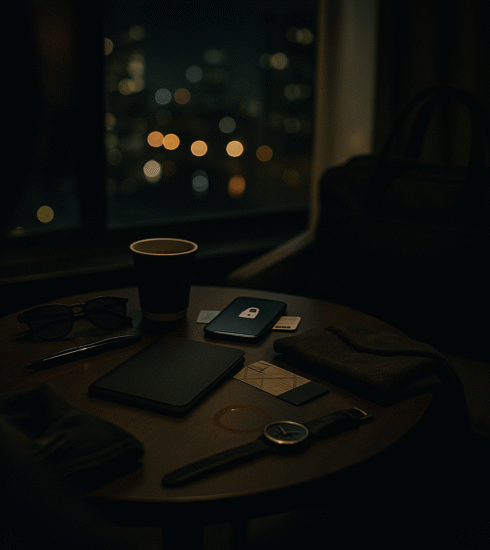Hotel Security Tips That Actually Help
Your hotel room is not a secure location. It is a temporary space you share with staff, previous guests, and potential observers. Many common security tips are theater. They provide a false sense of safety without addressing genuine vulnerabilities. True security comes from a mindset of awareness and a series of deliberate, low profile actions. This approach focuses on practical hotel security tips that actually help you control your environment. The goal is to deter, detect, and delay any unwanted attention without drawing any yourself.
The primary threat is not a dramatic breach. It is the quiet, unnoticed access to your space and your information. Your job is to make that access difficult, noisy, and time consuming for an adversary.
Conducting Your Own Arrival and Room Assessment
Your security process begins before you even see your room. Request a room located between the third and sixth floors if possible. This placement avoids easily accessible ground floor windows and reduces the risk associated with fire department ladder limitations. Avoid rooms directly adjacent to emergency exits or stairwells, as these can provide cover for someone waiting. The goal is a room that is unremarkable and offers no obvious tactical advantages to a potential threat.
Once you have your key card, proceed to your room with your luggage in hand. Do not allow the bell staff to precede you if you can avoid it. This gives you the first look at the space in its undisturbed state. Before unpacking, place your bags just inside the door and conduct a full sweep of the entire room. Check behind curtains, inside all closets, and under the bed. Ensure the bathroom is empty and the shower curtain is drawn back.
Verify the operation of the primary door lock and the deadbolt. Test the chain lock or secondary bar lock, but understand its limitations. These devices are often flimsy and designed for privacy more than security. Your initial assessment sets the conditions for your entire stay. It is a non negotiable first step that establishes your awareness and control of the environment from the outset.
Establishing Control at the Entry Point
The door is your main physical barrier. Your first task is to ensure it closes and locks properly every single time. When you enter or leave, physically watch the door swing shut and listen for the solid engagement of the latch. Do not assume it has locked itself. A door that does not fully close is a door that is not locked. This simple habit prevents the most common oversight in hotel security.
Use the deadbolt and secondary lock whenever you are inside the room. For an additional layer of security, consider a portable door alarm. These legal devices are placed on the floor and will sound a loud tone if the door is opened while the device is armed. Another low tech option is to wedge a rubber doorstop under the door from the inside. It will create significant resistance and noise if someone attempts to force the door open.
Do not answer the door for unexpected visitors without verification. If someone claims to be hotel staff, call the front desk to confirm they sent someone to your room. A genuine employee will not mind you verifying their identity. This simple phone call prevents most social engineering attempts to gain access to your room. Your door is a checkpoint, not a welcome mat. Control it with intention.
If your door does not audibly click shut, it is not secure. Never assume the latch has engaged. Always turn and verify the mechanism has fully seated into the strike plate.
Managing Your Digital and Information Footprint
Your digital presence in a hotel is often more vulnerable than your physical one. Avoid using the hotel’s public Wi Fi network for any sensitive activities. If you must conduct business, use a personal mobile hotspot or a reputable VPN service. The open nature of hotel networks makes them prime targets for data interception. Your laptop and phone contain a wealth of information that must be protected.
Be mindful of what you discuss on phone calls within your room. Walls are often thinner than they appear. Avoid saying your room number out loud in public areas like the lobby or elevator. If a staff member asks for your number, show them your key card instead of verbalizing it. This prevents others from overhearing and noting your location.
Do not leave sensitive documents or electronics out in the open. When you leave the room, place laptops and important papers inside your luggage and lock it. Use the room safe for passports, extra cash, and other small valuables. While not impervious, the safe will deter a casual opportunist. Your information is a target. Protect it with the same diligence you apply to your physical person.
Maintaining Awareness in Common Areas
Common areas are where you are most observable. Be aware of your surroundings in the lobby, elevators, and hotel bar. Avoid establishing predictable patterns, such as getting coffee at the exact same time every morning. Choose seating that puts your back to a wall and gives you a clear view of the room’s entrances and exits. This is not paranoia. It is a simple habit that improves your situational awareness.
Be cautious in elevators. If someone gets on who makes you uncomfortable, simply get off at the next floor. There is no need to be polite at the expense of your comfort and safety. Keep your key card readily accessible so you are not fumbling for it at your door. Fumbling makes you look distracted and vulnerable. Move with purpose from the elevator to your room.
Notice who is around you when you enter your access code for the fitness center or business lounge. People can shoulder surf your PIN from a surprising distance. Use your free hand to shield the keypad as you enter the code. These small actions reduce your visibility as a target. They make you a harder, less appealing prospect for anyone looking for an opportunity.
Preparing for Emergency Egress and Response
You must know how to get out before you need to get out. Upon arrival, locate the nearest fire exits and stairwells. Count the number of doors between your room and the exit. In a smoke filled hallway, you may need to find your way by touch. Knowing the exact number of doors to feel for can guide you to safety. This takes less than sixty seconds and is a non negotiable task.
Keep your room key, a flashlight, and a pair of hard soled shoes readily accessible from your bed. In an emergency, you will not have time to search for these items in the dark. A small flashlight on your nightstand is invaluable during a power failure or for signaling. Your shoes protect your feet from broken glass or debris as you evacuate.
If you hear an alarm, always verify the threat. Feel your door for heat and look for smoke seeping under it. If you confirm a real emergency, take your key and flashlight and proceed immediately to the stairwell. Do not use the elevator. Your prior reconnaissance of the exit route will now pay dividends. Calm, deliberate action based on a pre established plan will always outperform panic.
True security is a series of habits, not a piece of gear. It is the consistent application of simple, effective measures that layer together to create a formidable defense. Start with one procedure. Master it, then add the next. The goal is not to live in a state of fear, but to move through the world with a quiet confidence born from preparedness. Tonight, when you return to your room, physically watch the door close and listen for the lock.





